Memorializing the Deadly Myth of John Wayne
On the 100th anniversary of John Wayne's birth, falling as it does on Memorial Day weekend, Truthdig presents two pieces connecting the hype of the celluloid "war hero" who never fought to the hard human costs of war. It was the Duke's deadly myth, after all, that would lead young men like Ron Kovic to sacrifice life and limb in needless wars.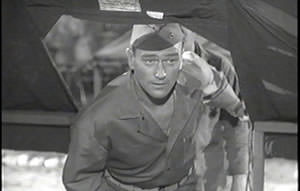
Ed Rampell and Luis I. ReyesThis Memorial Day is the centennial of John Wayne, born May 26, 1907, in Winterset, Iowa. The 2007 Harris poll of America’s favorite movie stars places the Duke at No. 3. A remarkable ranking, considering Wayne’s last picture was 1976’s “The Shootist” and he died 28 years ago.
Wayne, who didn’t win an Oscar until late in a six-decades-long career, is Hollywood’s most underrated actor. He was arguably a better actor than the fellow Midwesterner and two-time Oscar winner to whom he is often compared, Marlon Brando, the Method actor who played antisocial misfits in films ranging from the 1954 biker flick “The Wild One” to 1973’s sexually charged “Last Tango in Paris,” which critic Pauline Kael called “the movie breakthrough” that “altered the face of an art form.” If Wayne portrayed the strong, silent type in films such as 1952’s “A Quiet Man,” Brando was known for bellowing “Stella!” in 1951’s “A Streetcar Named Desire.”
In private life, Brando was a troubled, angry loner, much like the characters he often portrayed. Wayne’s motion picture persona is associated with cowboys and soldiers. In fact, he was neither.
Wayne was full of contradictions. Although the star of countless Westerns such as John Ford’s 1939 “Stagecoach” and 1953’s “Hondo” owned a ranch, the Duke “didn’t particularly like horses and preferred suits and tuxedos to chaps, jeans and boots,” according to his son, Michael Wayne. The prototypical cowpoke also favored the sea over the prairie.
While many of his contemporaries, including Henry Fonda, Clark Gable and Ronald Reagan, served in the armed forces during World War II, the lead in such wartime sagas as 1945’s “They Were Expendable,” 1948’s “Fort Apache” and 1968’s “The Green Berets” did not. Wayne was not only missing in action during the 1940s’ liberation of the Philippines and Europe, he wasn’t a cavalry officer, a Vietnam commando or a Leatherneck — flying or otherwise — for he was never in the military.
According to Gary Wills’ book “John Wayne’s America,” the man who portrayed the archetypal, battle-hardened Marine, Sgt. Stryker, in 1949’s “The Sands of Iwo Jima,” actually avoided the draft during WWII. Wills contends that the Duke did not reply to letters from the Selective Service system, and applied for deferments. Apparently, Wayne — who had sought stardom during years of B-pictures following Raoul Walsh’s 1930 frontier drama “The Big Trail” — got his big break during the struggle against fascism when many Hollywood action heroes like Tyrone Power enlisted and shipped out overseas.
With much of the competition away in the Pacific and European theaters, Wayne was able to storm movie theaters to solidify his stardom. While Jimmy Stewart and his fellow celebrity servicemen were real action heroes, Wayne was a “Lights! Cameras! Action!” hero who merely played the part in the safety of Tinseltown’s home front and back lot.
Director John Ford discovered Wayne when he was on USC’s football team, and with his rugged physique, the 6-foot-4-inch Duke was identified with American machismo.
Wayne was a vocal conservative, and his critics contend that the onscreen “Injun killer” was racist off-screen. In an infamous 1971 Playboy magazine interview, the Duke made insensitive comments about blacks and said this about America’s indigenous people: “I don’t feel we did wrong in taking this great country away from them. Our so-called stealing of this country from them was just a matter of survival. There were great numbers of people who needed new land, and the Indians were selfishly trying to keep it for themselves.”
Although he often was paired on screen with Irish redhead Maureen O’Hara, Wayne’s three marriages were all to Latinas. According to San Antonio-born actress Karen Kramer, who’d worked with Duke in 1954’s “The High and the Mighty,” while Wayne was shooting “The Alamo” near her hometown, he asked Kramer to accompany third wife Pilar when she shopped there. “She was Hispanic, you know,” Kramer said in an interview. “Texas was very reactionary and Duke was afraid she’d be maligned” unless the blond actress rode shotgun for Mrs. Wayne.
A virulent anti-communist, Wayne was president of the right-wing Motion Picture Alliance for the Preservation of American Ideals and cheered the Hollywood blacklist during the House Un-American Activities Committee’s purge of entertainment industry leftists. He starred in Red Menace movies such as 1955’s China-set “Blood Alley” and 1952’s “Big Jim McLain,” based on the case of the Hawaii 7, wherein suspected communists, including longshoreman union leader Jack Hall, were charged with advocating the overthrow of the American government. Wayne plays two-fisted federal agent Jim McLain (his name bears the same initials as Sen. Joe McCarthy’s) who busts Honolulu’s commies.
Nevertheless, Wayne reportedly considered himself a socialist during his freshman year at college, and voted for Roosevelt during the Depression. Some of his best pictures employed left-wing talents who were victimized by HUAC’s witch hunters. “Back to Bataan” (1945) was directed by Edward Dmytryk, who would become one of the Hollywood Ten in 1947, and co-written by blacklistee Ben Barzman. According to Barzman’s wife, Norma, at a 1945 New Year’s Eve party, Duke “put his arms around Ben and embraced him with fervor. ‘You goddamned communist!’ he accused, lovingly. Ben hugged him back. ‘You goddamned Fascist!’ “
In the crowning irony of the conservative’s career, Wayne finally struck Oscar gold for playing Rooster Cogburn in 1969’s “True Grit” — written for the screen by ex-communist Marguerite Roberts, blacklisted in 1952 for refusing to inform on leftists.
At the height of the Cold War, Nikita Khrushchev visited America and asked to meet Wayne, who met the Soviet premier at President Eisenhower’s request. (Wayne also met with Emperor Hirohito during the WWII leader’s 1975 state visit to America.)
An outspoken hawk during the Vietnam War, Wayne co-directed and starred in the Pentagon-subsidized propaganda picture “The Green Berets.” Duke denounced antiwar protesters, reportedly saying: “As far as I’m concerned, it wouldn’t bother me a bit to pull the trigger on one of ’em.”
Wayne was, in reality, a draft dodger. America’s archetypal soldier was in fact a chicken hawk. He was a cheerleader and champion of militaristic patriotism and combat he had never experienced. Wayne had “other priorities” during WWII — achieving superstardom (and saving his neck) was more important than defeating fascism. Much like Vice President Dick Cheney, who sought numerous deferments during the Vietnam War, Wayne was the quintessential war wimp.
According to Pilar Wayne, her husband “would become a ‘superpatriot’ for the rest of his life trying to atone for staying home” during WWII. Like Wayne, the current crop of GOP chicken hawks are great actors, overcompensating for their previous patriotic failings (draft dodging, etc.) by sounding the jingoistic battle cry for a new generation of working-class sons and daughters to go to war. Or, as George W. Bush did in a priceless moment of Hollywood flourish, dressing up in a flight suit to declare a failing and deadly war in Iraq a “mission accomplished.”
Wayne convinced us through make-believe that he was Davy Crockett, the Ringo Kid, a Flying Tiger or D-day parachutist Lt. Col. Benjamin Vandervoort in 1962’s “The Longest Day.” Pretending is the essence of acting, and that’s why Wayne was a better actor than Brando, who usually played versions of himself. Wayne, on the other hand, created imaginary characters fabricated out of whole cloth.
Unfortunately, in an America manipulated by the military-industrial-entertainment complex, as Ford’s “The Man Who Shot Liberty Valance” put it: “When the legend becomes fact, print the legend.” But these lies and fantasies have consequences in real life for those mistakenly buying into them. Veteran Ron Kovic, who was portrayed by Tom Cruise in Oliver Stone’s 1989 “Born on the Fourth of July,” declared after he was paralyzed from the waist down in Vietnam: “I gave my dead dick for John Wayne.” It’s interesting that Wayne’s last public appearance was when he presented the best picture Oscar in 1979 to Michael Cimino’s “The Deer Hunter,” a Vietnam film that raised questions about honor and patriotism.
The greatest incongruity in Wayne’s world of incongruities is that the militaristic hooey he broadcast may have killed the Cold Warrior. “The Conqueror” — released in 1956 and starring Wayne as Genghis Khan — was shot on location 100 miles downwind of Nevada’s nuclear testing sites. An unusually high percentage of cast and crew members eventually died of cancer, including Susan Hayward, Agnes Moorehead, Dick Powell and Wayne himself, who exited stage right on June 11, 1979, of stomach cancer. In 1980, People magazine published a story about “The Conqueror’s” cancer victims, and quoted a Pentagon Defense Nuclear Agency scientist’s reaction: “Please, God, don’t let us have killed John Wayne.”
Screenwriter Oscar Millard originally wanted Brando — who supported civil rights, the Black Panthers and the antiwar movement and had declined his 1973 “Godfather” Oscar to protest Hollywood’s abusive depiction of Indians in Westerns, many of them starring Wayne — to play Genghis Khan.
On the 100th anniversary of the Duke’s birth, Americans need to distinguish between myth and deadly realities. We must re-examine America’s love affair with settling disputes through gunplay, and question people and institutions that demand that the young sacrifice their minds and bodies in tribute to these actors (of the stage and political theater) and the violence they celebrate.
Maybe then, when the truth and not the legend is printed, we can agree with the 1960s’ prototypical protester, Abbie Hoffman, who reportedly quipped after Wayne’s death: “Even cavemen felt a little admiration for the dinosaurs that were trying to gobble them up.”
Luis I. Reyes and Ed Rampell co-authored “Made In Paradise, Hollywood’s Films of Hawaii and the South Seas” and “Pearl Harbor in the Movies.” Reyes co-wrote “Hispanics in Hollywood, A Celebration of 100 Years in Film and Television.” Rampell wrote “Progressive Hollywood: A People’s Film History of the United States.”
More links:
Click here to listen to a poem read by Vietnam veteran Ron Kovic.
Follow this link to view a photo essay of Kovic by Zuade Kaufman.
Editor’s Note: Ron Kovic recently relayed the story of his one near encounter with John Wayne, when Kovic was serving his first tour of duty, to Truthdig:
“John Wayne visited my battalion area during my first tour of duty. I did not go down to meet with him or hear him that day, but later that evening those that went down [to see him] said that there had been sniper fire, and that everyone — including John Wayne — had ducked for cover, had scattered. I was not there to witness it; I was in my tent. I realized at that moment that he was a human being, not a cinematic god, just like me. He was as vulnerable as I was. I didn’t feel let down, because one of the reasons why I had joined the Marine Corps, and one reason why many of my generation went to war, was because of the romanticized version of war.
I remember feeling empathy as I sat in my tent long ago. I remember feeling for John Wayne and realizing he was just a human being, and he was dealing with the same reality as the rest of us — life and death — and he was just trying to get home.”
Your support matters…Independent journalism is under threat and overshadowed by heavily funded mainstream media.
You can help level the playing field. Become a member.
Your tax-deductible contribution keeps us digging beneath the headlines to give you thought-provoking, investigative reporting and analysis that unearths what's really happening- without compromise.
Give today to support our courageous, independent journalists.

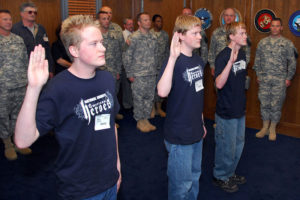
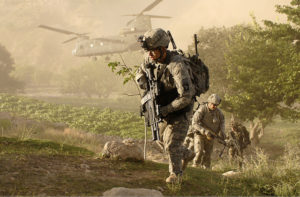
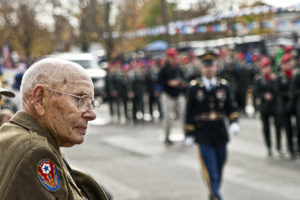
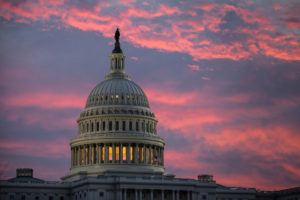
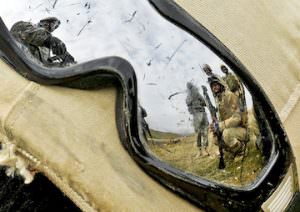
You need to be a supporter to comment.
There are currently no responses to this article.
Be the first to respond.